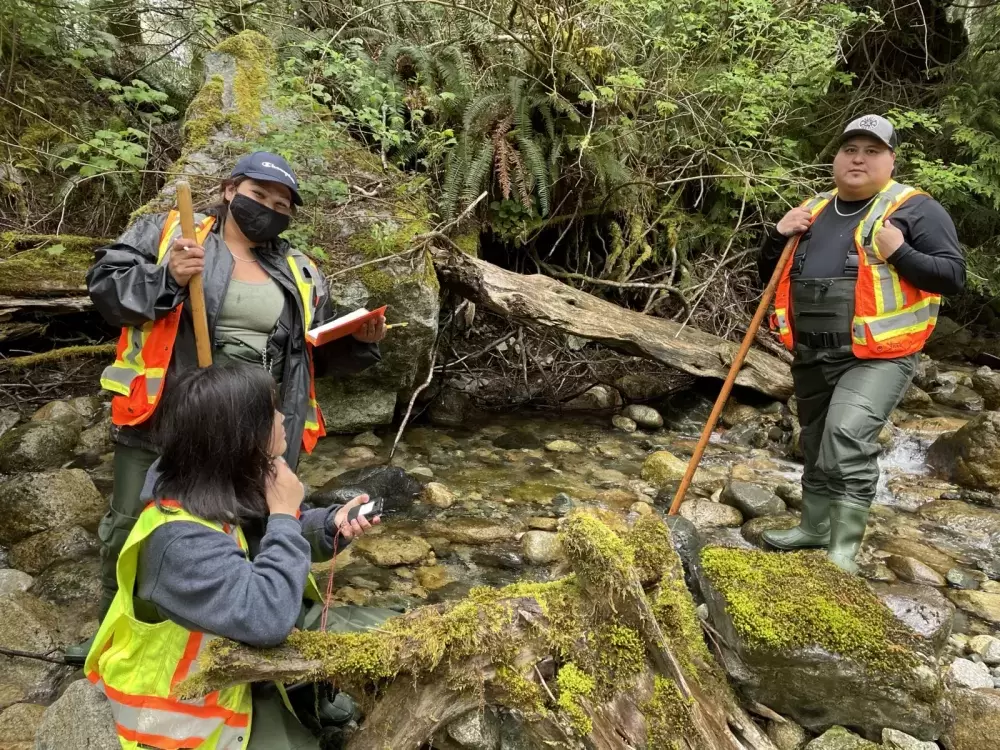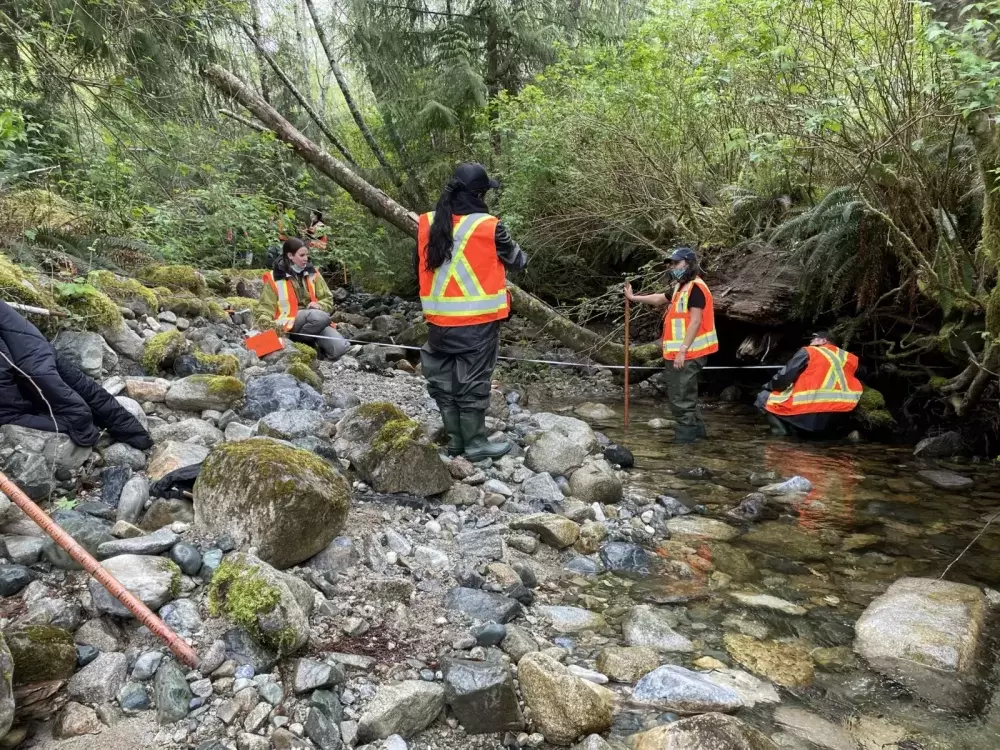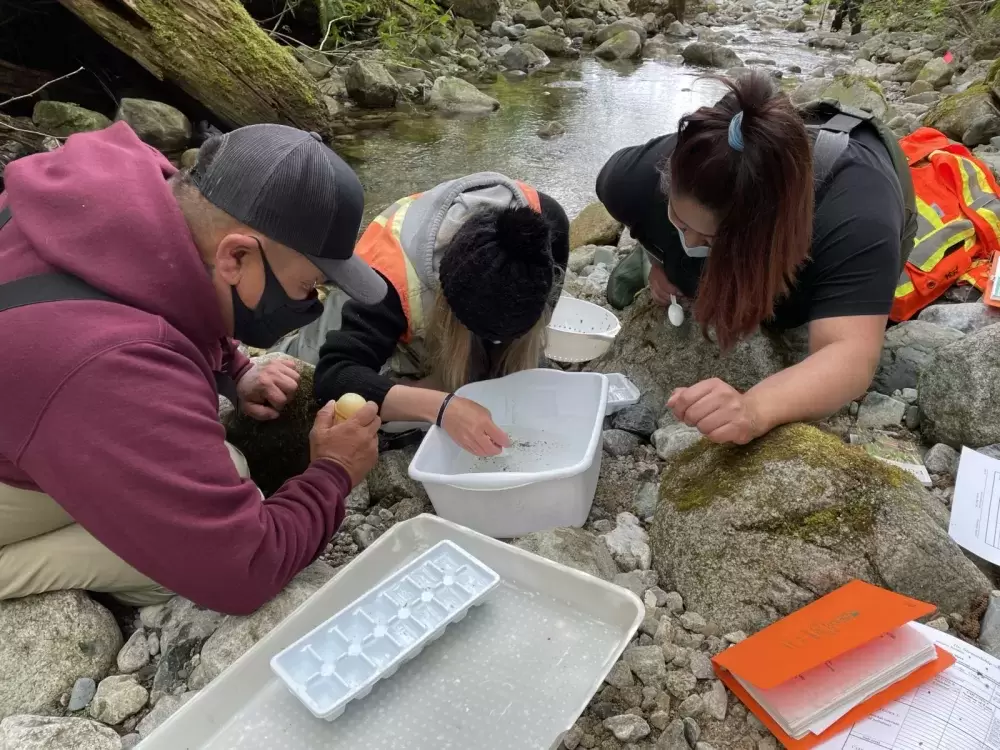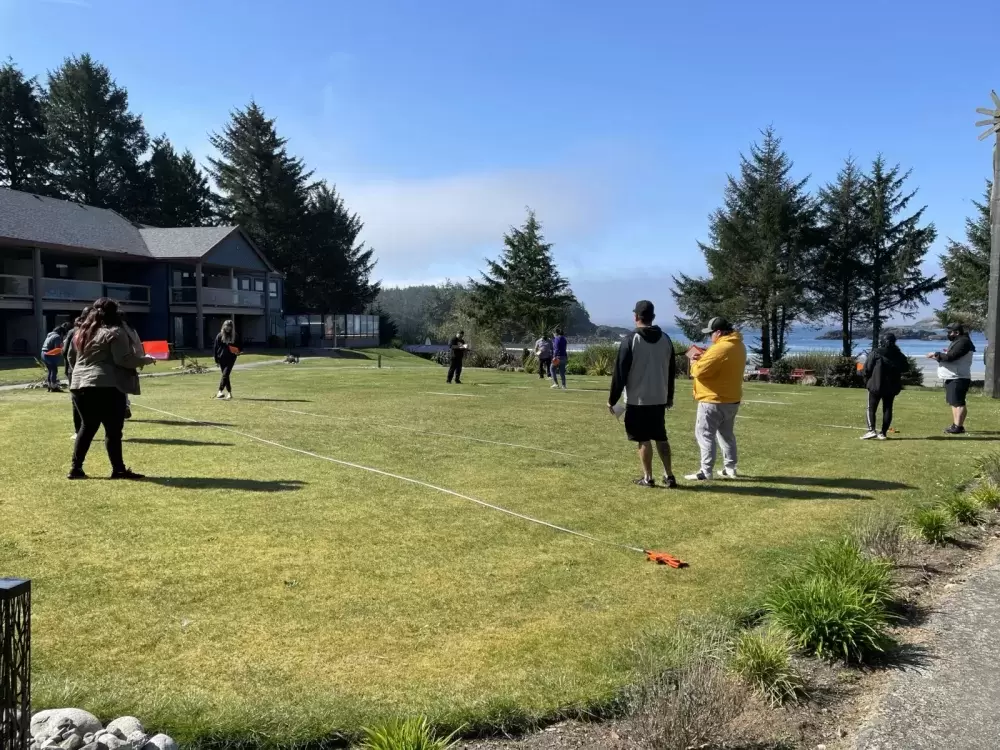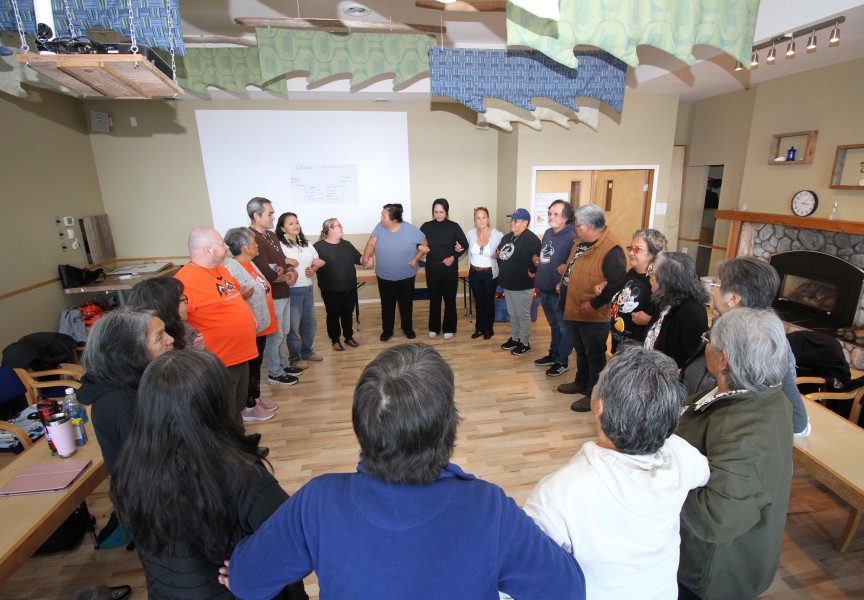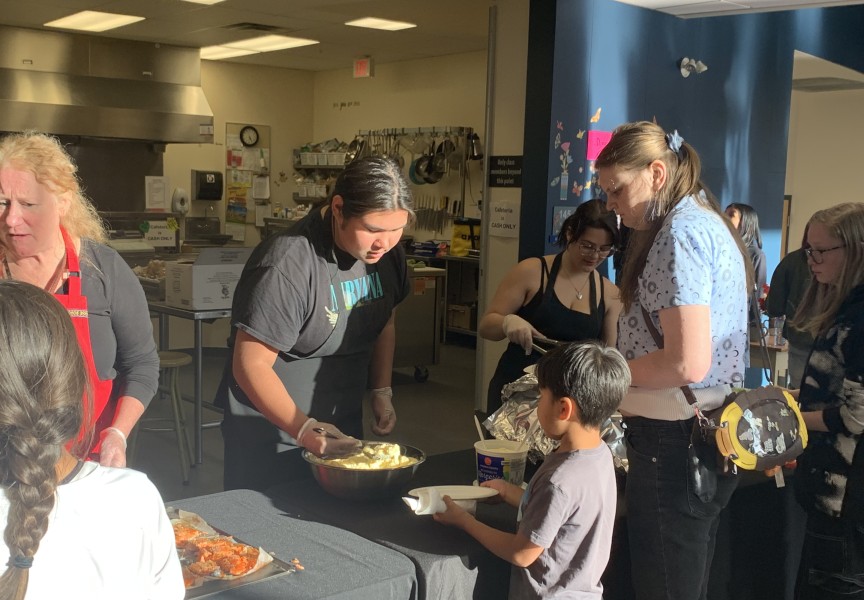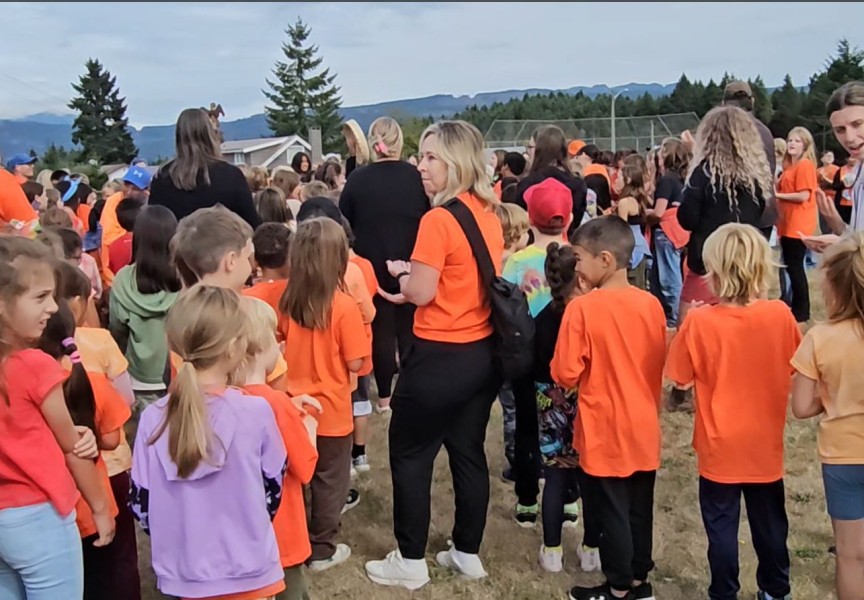After many years working as a health care aid, Kayla Lucas needed a change. Unsure of which direction to go next, the Hesquiaht First Nation council member took a job preparing willow for replanting with the Central Westcoast Forest Society (CWFS).
“I had no idea what I was doing or what to expect,” she described.
At the time, Lucas said she knew little about working in fisheries, forestry, or environmental conservation.
But after carrying out various work contracts with the non-profit organization, her interest peaked. Before long, Lucas was asked to participate in a technical training certification program that the CWFS was facilitating and without hesitation, she agreed.
“[The training] opened many doors for me,” said Lucas. “It also opened up something I didn’t realize I was interested in.”
Funded through B.C.’s Healthy Watersheds Initiative, 8 participants from Tla-o-qui-aht, Hesquiaht and Ahousaht First Nations attended the 5-week training between April 19 to May 21.
Held at the Best Western Plus Tin Wis Resort in Tofino, they learned about fish and fish habitat, land monitoring skills, water monitoring skills, and essential environmental skills.
“[Participants] identified roles and responsibilities for environmental monitoring crews, they were able to conduct standard measuring and sampling techniques and learn about turbidity monitoring,” explained Mandala Smulders, CWFS director of operations.
Offered on a first-come first-serve basis, the training was not only free, but Smulders said participants were compensated to attend.
Although CWFS did not pay for their tuition, participants from the neighbouring nations of Ka:'yu:'k't'h'/Che:k'tles7et'h' and Yuułuʔiłʔatḥ First Nations also joined.
The goal was to provide those involved with a variety of environmental specializations that they could carry with them into the field within their own territories, Smulders said.
After completing her certification, Lucas landed a job working in her home territory on the nation’s hydro project at Ahtaapq Creek as an environmental technician.
She remembers being a young adult when the hydro project was “just a dream.”
The late-chief Richard Lucas was just putting it into motion, she recalled.
“Being a really big part of this project now is amazing,” she said. “Every time I'm out there, I can't help but think of [Richard]. I know he's looking down and just so proud of this project. This was his baby, this was also his stress, but he made it happen. We're just carrying out what he was able to do for our nation.”
The Maaqutusiis Hahoulthee Stewardship Society has also employed two of the certificate recipients as full-time stewardship guardians to conduct regular patrols of Ahousaht’s territory. CWFS funds the positions through the Healthy Watersheds Initiative.
The society began in 1995, after the Meares Island logging protests in Clayoquot Sound. As logging was shutting down in the region, CWFS was established to provide job opportunities to those who had lost their livelihoods through restoring systems that had been degraded from logging, Smulders said.
Representatives from the surrounding Tla-o-qui-aht, Hesquiaht, Ahousaht, Toquaht and Yuułuʔiłʔatḥ First Nations sit on the board of directors.
Working with the nations to identify priority areas for restoration has always been one of the society's mandates, said Smulders.
By focusing on training, capacity building, and providing employment opportunities, CWFS aims to build-up a restoration-based economy, she added.
Terry Dorward, Tla-o-qui-aht Tribal Parks project coordinator, said that combining traditional knowledge with CWFS’s science-based approach creates an ideal partnership.
“Our mandate, our Tla-o-qui-aht vision, is to have healthy rivers producing salmon,” he said. “It goes back to our responsibilities. We’ve been trying to build a conservation economy for some time now and working with the folks at CWFS is the perfect fit.”
CWFS hopes to offer more training courses in the fall, once the peak of their restoration work has slowed down, said Smulders.
For the most part, Lucas said the hands-on training hardly even felt like work.
“It was just fun,” she said. “We were able to identify birds, get right in there and identify bugs, identify trees, identify the dozens and dozens of mosses and what their purposes are in the environment. That was my biggest takeaway – everything has a purpose, and everything has to be protected.”
Lucas said the technical training made her more aware of her surrounding environment and what she can do to help keep them protected.
“I learned just how important it is to make sure the streams are effective for our fish to return,” she said. “It’s really important to take care of those streams, like our ancestors did.”

